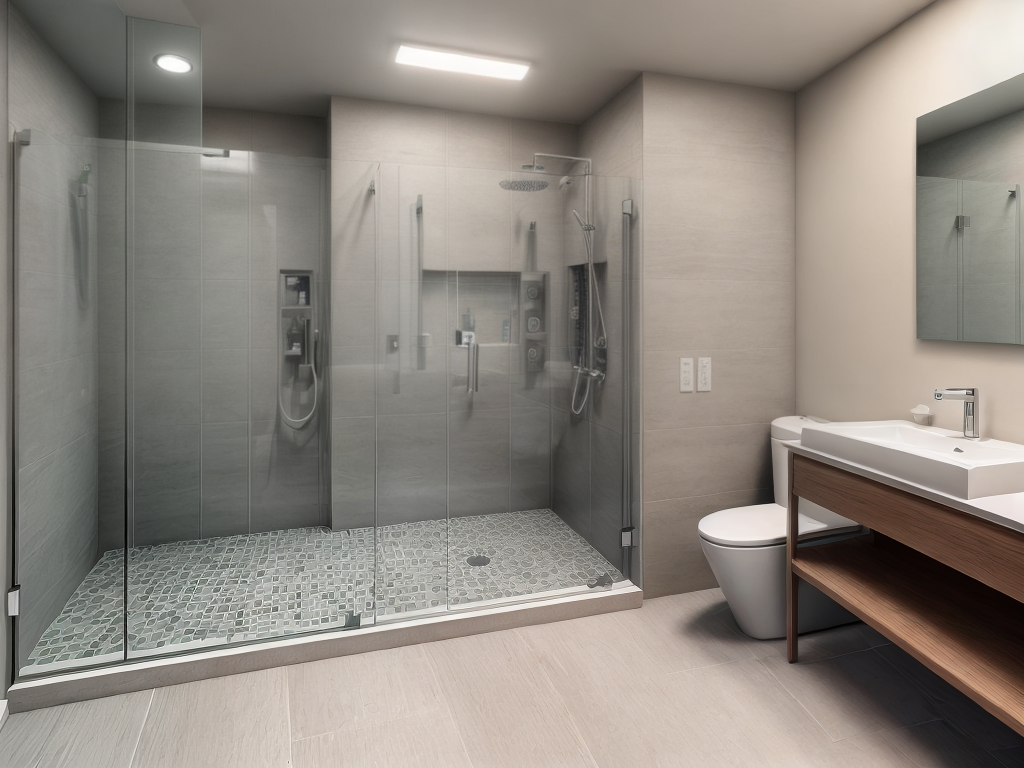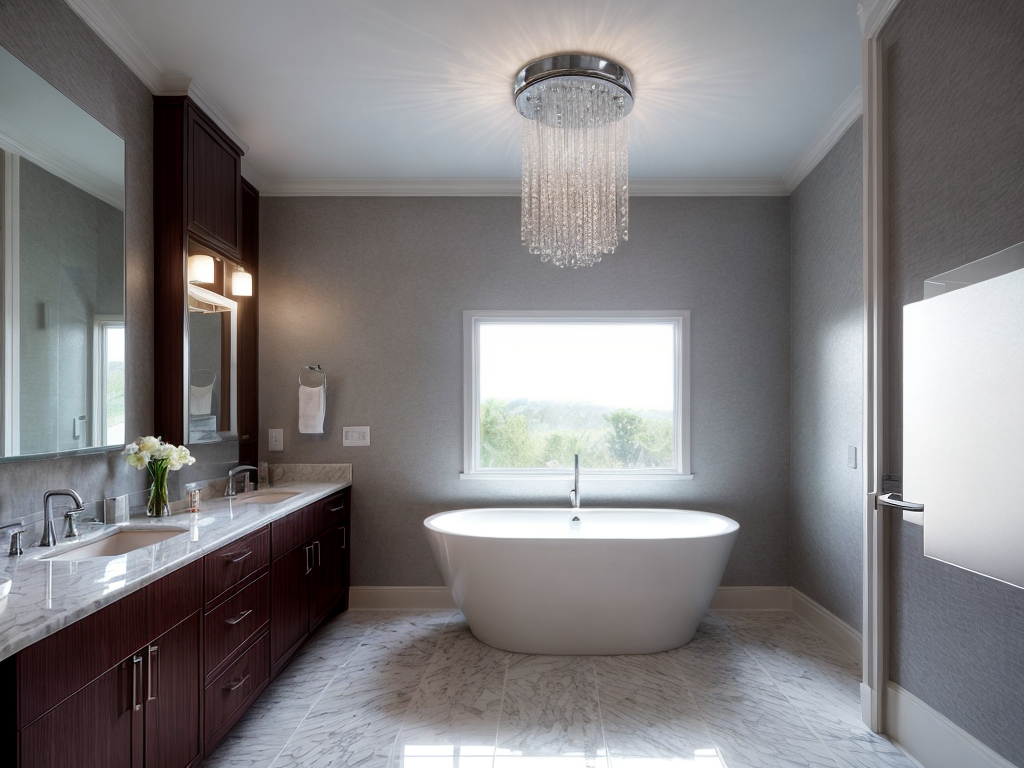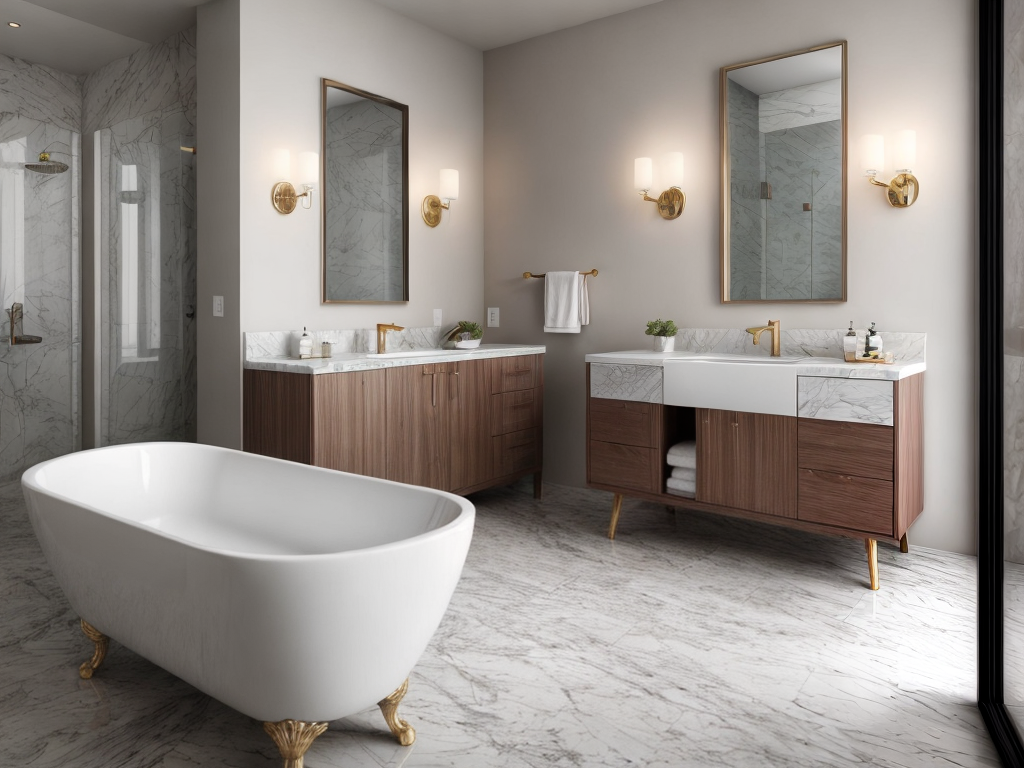In recent years, there has been a growing emphasis on sustainability and eco-friendly practices in various industries, including home design and construction. Bathrooms, in particular, have become an area of focus for incorporating sustainable materials and eco-friendly design ideas. As we move towards a more environmentally conscious future, it is crucial to explore and adopt sustainable alternatives that not only benefit our planet but also enhance the aesthetics and functionality of our bathrooms. In this article, we will delve into the exciting world of sustainable bathroom design, highlighting innovative materials and design ideas that can help create a greener and more sustainable future.
1. Sustainable Materials for Bathroom Surfaces
When it comes to bathroom surfaces, choosing sustainable materials can make a significant difference in reducing our carbon footprint. Traditional materials like ceramic tiles and natural stone can be replaced with more eco-friendly options. For instance, recycled glass tiles not only add a unique touch to the bathroom but also minimize waste by repurposing glass bottles and jars. Bamboo and cork, being rapidly renewable materials, are excellent choices for bathroom flooring, as they are not only durable but also environmentally friendly.
2. Water-Efficient Fixtures
Water conservation is a critical aspect of sustainable bathroom design. Installing water-efficient fixtures can help reduce water consumption significantly. Low-flow toilets, for example, use less water per flush without compromising on performance. Similarly, aerated faucets and showerheads mix air with water, reducing water usage without sacrificing water pressure. These small changes can have a substantial impact on water conservation, benefiting both the environment and your utility bills.
3. Energy-Efficient Lighting
Lighting plays a vital role in setting the ambiance of any space, including bathrooms. By opting for energy-efficient lighting solutions, such as LED bulbs, you can reduce energy consumption and lower your carbon footprint. LED lights not only consume less energy but also have a longer lifespan compared to traditional incandescent bulbs, reducing the frequency of replacements. Additionally, installing motion-sensor switches can help conserve energy by automatically turning off the lights when the bathroom is vacant.
4. Natural Ventilation and Lighting
Incorporating natural ventilation and lighting into bathroom design can have a significant impact on energy usage. By strategically placing windows and skylights, you can maximize natural light and airflow, reducing the need for artificial lighting and mechanical ventilation. Not only does this save energy, but it also creates a more pleasant and inviting atmosphere in the bathroom.
5. Recycled and Upcycled Bathroom Fixtures
Another way to embrace sustainability in bathroom design is by incorporating recycled and upcycled fixtures. Repurposing old materials and giving them a new life not only reduces waste but also adds a unique and eclectic touch to the bathroom. For example, salvaged wood can be transformed into a beautiful vanity, while vintage plumbing fixtures can add charm and character to the space. These recycled and upcycled elements not only contribute to sustainability but also create a one-of-a-kind bathroom design.
6. Water Filtration Systems
Considering the importance of water quality in our daily lives, integrating water filtration systems into bathroom design is a wise choice. These systems ensure that the water used for bathing, brushing teeth, and other bathroom activities is free from harmful contaminants. By investing in a water filtration system, you not only improve your health but also reduce the consumption of bottled water, minimizing plastic waste.
7. Greenery and Biophilic Design
Bringing nature indoors through the incorporation of plants and biophilic design elements can greatly enhance the sustainability and aesthetics of a bathroom. Plants not only improve air quality by absorbing carbon dioxide and releasing oxygen but also add a calming and refreshing touch to the space. Additionally, biophilic design principles, such as using natural materials, textures, and colors, help create a harmonious and soothing environment that connects us with nature.
In conclusion, the future of bathrooms lies in sustainable materials and eco-friendly design ideas. By embracing these innovations, we can create bathrooms that are not only visually appealing but also environmentally conscious. From choosing sustainable materials for surfaces to implementing water and energy-efficient fixtures, there are numerous ways to make our bathrooms more sustainable. By making conscious choices in our bathroom design, we can contribute to a greener future while enjoying the benefits of a beautifully designed and eco-friendly space. Let us strive towards a future where sustainability and style go hand in hand, creating bathrooms that are both luxurious and environmentally responsible.



